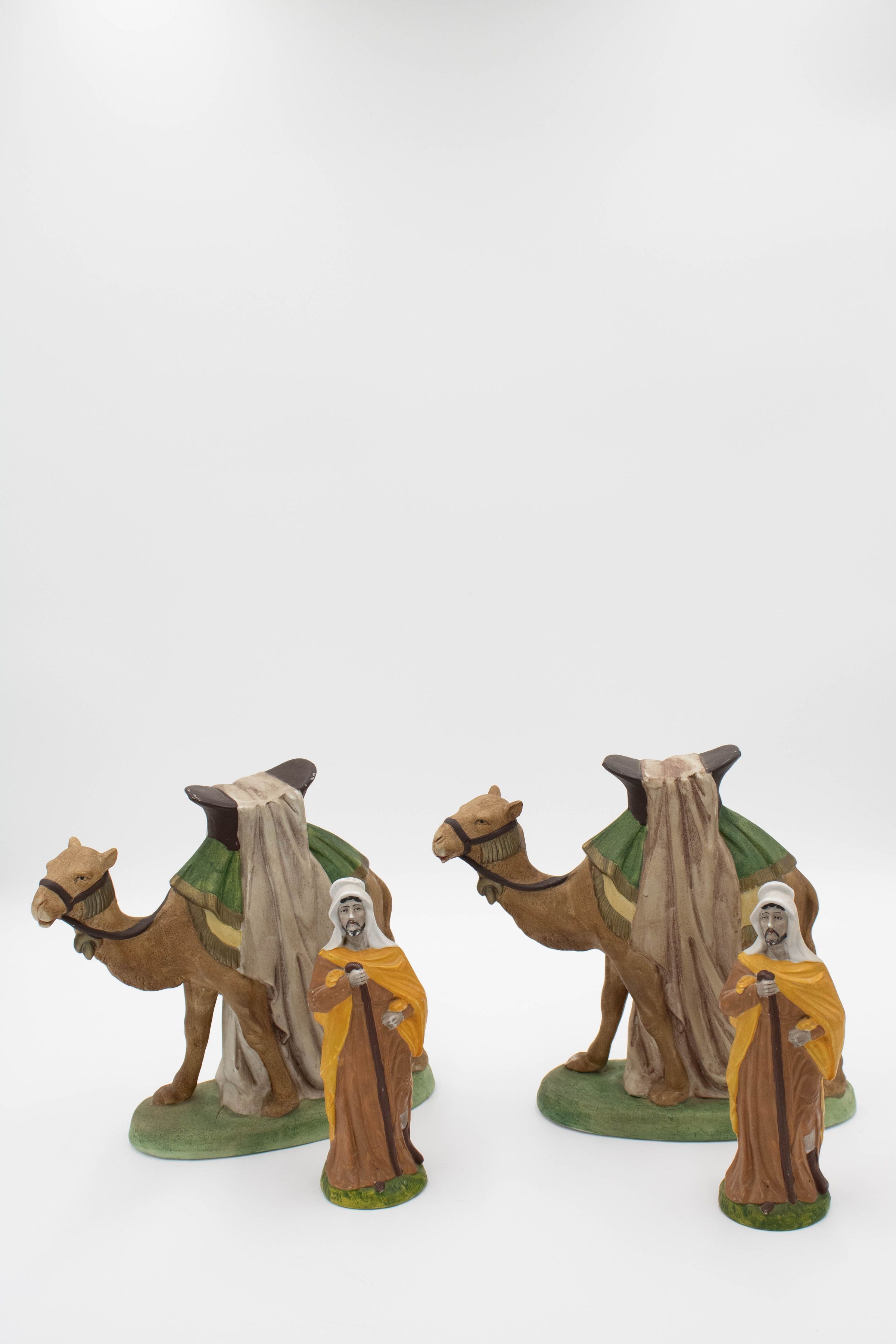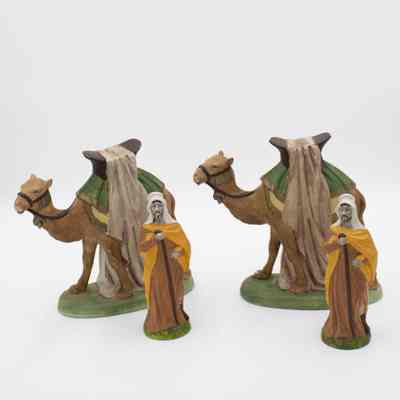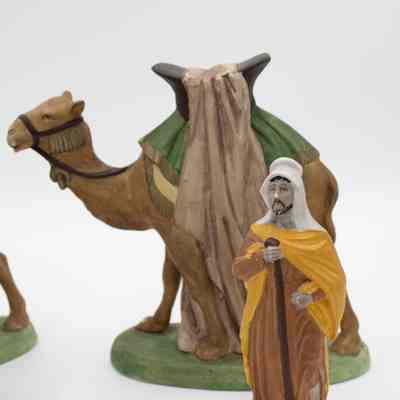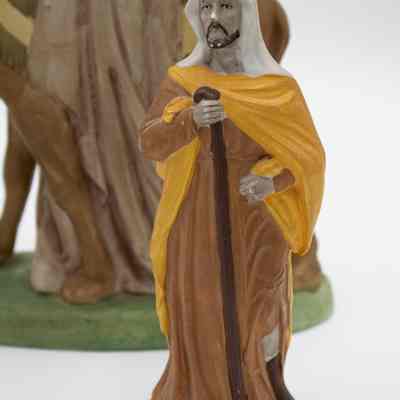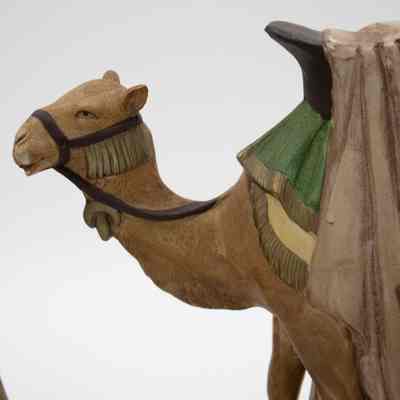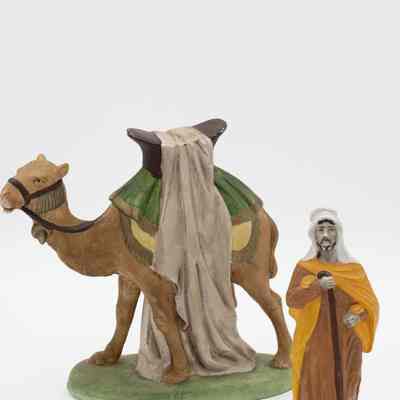Name/Title
Pair of Ceramic Camels with Male Bedouin FigurinesEntry/Object ID
JI2025000285Description
Pair of ceramic camels and male Bedouin figurines. The male figurines have brown traditional Kuwaiti dresses, a yellow shall, and white head covering with a walking stick. Each camel has a yellow and green saddle pad, a large brown saddle, and draped beige cloth. The reins are brown. The Bedouin people are a pastorally nomadic Arab tribe who have inhabited the desert of the Arab Peninsula, North Africa, the Levant, and Mesopotamia for centuries. The camel depicted is a dromedary, or one-humped, camel. They were first domesticated in the region around 4000 years ago and continue to play important cultural and practical roles. In Kuwait, they are featured in art, literature, poetry, and even used for camel racing. Additionally, their milk and wool are important for clothing and cosmetics in the area.Context
The two camels and two male Bedouin figurines were made in Germany but were owned by the Jordans during their time in Venezuela.Ethnography
Cultural Region
Country
GermanyContinent
EuropeRegion
Middle East